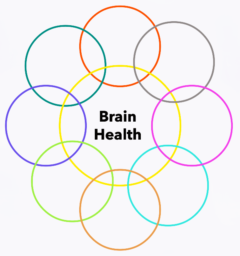
I often hear people talk about cardiovascular exercise in the context of heart health and weight management. Yet, it also influences the complex realm of our brain function. My focus here is to shed light on how regular aerobic exercise can actually change the way our brain operates.
It starts with a basic premise: cardiovascular activity boosts blood flow throughout the body. This is important for the brain since increased blood circulation delivers more oxygen and nutrients vital for brain health. Heightened blood flow is linked to improved cognitive abilities. simply put, it fuels the brain’s powerhouse.
Beyond better blood circulation, there’s something fascinating occurring at the molecular level. During cardiovascular activities, a protein called Brain-Derived Neurotrophic Factor, or BDNF, plays a pivotal role. BDNF supports the survival of existing neurons and encourages the growth and differentiation of new neurons and synapses. Essentially, it’s like a superfood for brain cells, promoting their growth and interconnectivity.
While such terms as neurogenesis might sound complex, they’re part of a straightforward idea: our brain can grow and adapt at any age, and cardio exercise is a key contributor to that. With each step, pedal, or stroke, we’re not just working toward a healthier body, but we’re also laying the groundwork for a sharper, more robust brain.
Mental Clarity and Mood: The Psychological Benefits of Regular Exercise
You know that feeling after a good run or a session on the bike – your mind seems clearer and your mood lifts. It’s not just your imagination; there’s evidence to support this.
Researchers have shown that aerobic workouts can significantly reduce symptoms of anxiety and depression. These activities release endorphins, often dubbed ‘feel-good’ hormones, which can lead to an immediate mood boost.
But the benefits don’t stop there. Regular exercise contributes to enhanced memory and better concentration. When you make aerobic exercise a routine, your cognitive reserves are fortified, and these improvements are more than short-lived perks – they can play a preventative role in long-term mental health.
Experts agree that the key lies in consistency. Engaging in cardiovascular exercise several times a week can create lasting changes in your brain health. Studies spotlight not just the enhancement in mood but also the reduction in the risk of developing cognitive issues later in life.
Cognitive Gains: Unpacking the Impact of Cardio on Brain Structure and Function

You’ve probably heard the saying ‘a healthy body equals a healthy mind,’ and there’s compelling evidence to back this up, especially when it comes to cardiovascular exercise. Engaging in activities like running, swimming, or cycling doesn’t just pump up your heart rate; it can also lead to positive changes in your brain’s structure.
Research points to significant transformations in areas of the brain associated with memory and learning—the hippocampus and prefrontal cortex—after regular cardiovascular exercise. The hippocampus, crucial for memory formation, has been shown to increase in volume with consistent aerobic workouts. Moreover, the prefrontal cortex, which orchestrates thoughts and actions in accordance with internal goals, exhibits improved functionality when you make cardio a part of your routine.
Aside from structural enhancements, cardio can boost brainpower in more observable ways. A regular dose of heart-pumping exercise is linked with improvements in tasks that require learning, attention to detail, and the management of complex tasks—skills that are crucial for both academic success and daily life.
As we age, cognitive decline becomes a common concern. Aerobic exercise serves as a preventive strategy, helping to maintain brain health well into the later years of life. Fitness professionals often recommend a mix of activities for a well-rounded regimen that supports both brain and heart health.
Taking this knowledge and applying it to daily life isn’t as difficult as it might seem. The key is in finding the ‘sweet spot’—the right amount of cardio that benefits the brain without leading to burnout or overtraining. Keep in mind, it’s not just about how much you do, but also about consistency and enjoyment, which leads to sustainability. I’ll guide you through practical ways to weave cardio into your lifestyle and touch on how to balance your efforts for the best cognitive outcome in the next section.
Integrating Cardio Into Your Lifestyle for Optimal Brain Health
You understand the benefits of cardiovascular exercise for your brain. You’re aware that being active can lead to significant improvements in mental functions and mood. So, what’s next? The challenge now is to incorporate these exercises into your daily routine. It doesn’t have to be overwhelming; small steps can lead to big changes over time.
Start by examining your current schedule. Identify pockets of time that could be dedicated to physical activity. This might mean a brisk walk during lunch breaks or a quick jog in the morning. The key is to find activities you enjoy, which will make it easier to stick to them.
When crafting your workout plan, consider variety to keep yourself motivated. Mix in different types of cardio such as cycling, swimming, or even dance classes. This not only prevents boredom but also challenges different muscle groups and prevents overuse injuries.
Remember, consistency is more important than intensity for brain health. It’s better to exercise moderately on a regular basis than to push yourself too hard and risk burnout or injury. Listen to your body and find a balance that works for you.
Lastly, don’t forget the role of rest, relaxation, and stress reduction. Downtime is crucial for your brain to process and heal. Without proper rest, you might not reap the full cognitive benefits of your workouts. Ensure you’re getting enough sleep and take rest days seriously.



